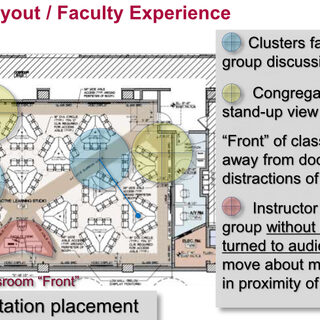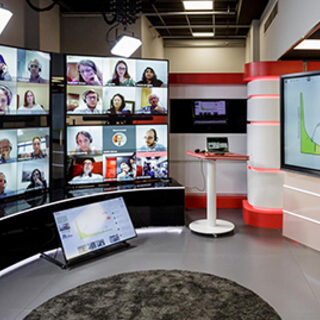Tradeline's industry reports are a must-read resource for those involved in facilities planning and management. Reports include management case studies, current and in-depth project profiles, and editorials on the latest facilities management issues.
Latest Reports
Form Follows Pedagogy: An Active Learning Environment Evolution
With active learning classrooms, Florida International University’s Herbert Wertheim College of Medicine was presented an opportunity to think differently about how to create spaces that support a different approach to instruction and interaction. Figuring out what works and what doesn’t in terms of acoustics, technology, lighting, and sightlines has demonstrated the importance of aligning the space—and the technology within it—with the pedagogy rather than the reverse.
Less Lab Space, More Support Space, and Customizable Workstations
A study of three academic medical centers constructed in 2009, 2014, and 2020 reveals little change in the square footage of research spaces over time but a radical change in how the square footage is being used. The result is research space that is more efficient, flexible, adaptable, and functional, with a higher percentage of space dedicated to lab support. The metrics gathered in this study can help guide lab planners as they look to the future.
Seven Considerations That Help Shape Long-Term Planning for Research Facilities
The most accurate prediction about the future of science is that it cannot be predicted, especially when it comes to laboratory facilities that support higher education, research, and manufacturing. Attention to these seven key considerations can help futureproof laboratory facilities: floor-to-floor height, utility distribution strategy, exterior research space, specialized environments, hazardous components, structural considerations, and engineering criteria.
Emphasis Shifts to Hybrid and Blended Learning at Higher Education Institutions Nationwide
Data from recent studies analyzing space utilization at colleges and universities across the country indicates a post-pandemic shift toward supporting hybrid education models that blend remote learning with in-person instruction. The studies were designed to analyze the impact of technology-intensive hybrid and experiential learning modalities on higher education while identifying key considerations, best practices, and metrics that can help space planners create more efficient, flexible environments that meet the needs of today’s students, faculty, and staff. Notably, in addition to an increased acceptance of remote learning, students and faculty also desire a return to in-person learning. This dichotomy is driving institutions to adapt hybrid education models that combine online education with active-learning classrooms that require sophisticated IT infrastructure and casual social environments that facilitate informal learning and collaboration.





